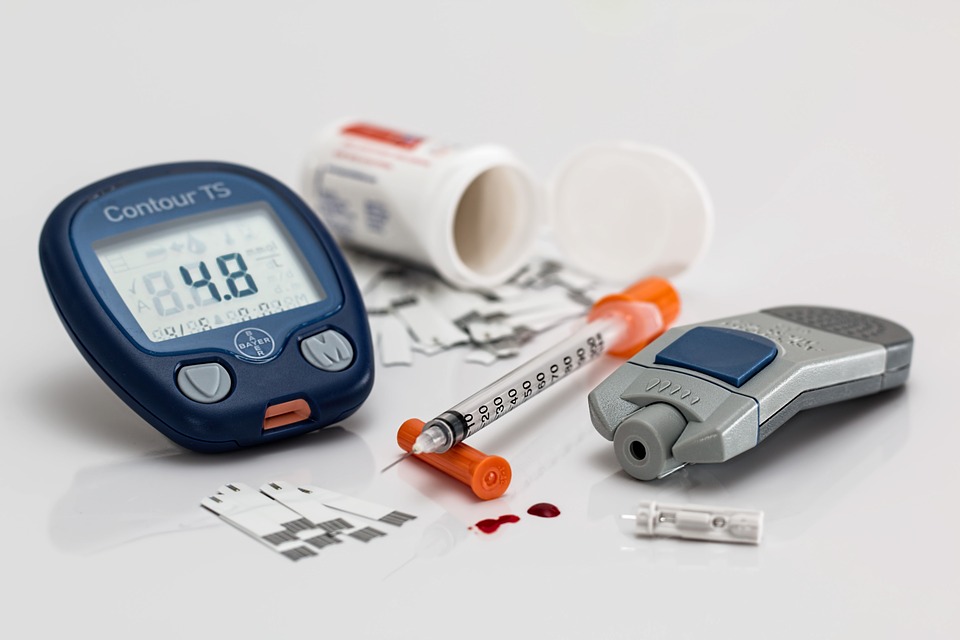How to naturally master your diabetes
08/09/2017 / By Jonathan Landsman

Diabetes has now reached epidemic proportions in the United States. In fact, the Centers for Disease Control and Prevention (CDC) reports that over 30 million people across the nation currently have the disease, with over 1.7 million new cases diagnosed yearly.
Plus, an astounding 86 million people aged 20 and over have prediabetes – blood sugar higher than normal that hasn’t yet reached the threshold for clinical diabetes. The Western medicine approach to treating diabetes typically involves a barrage of prescription medications, along with a recommendation to adopt the American Diabetes Association’s official diet. But, according to naturopathic physician Dr. Mona Morstein, there is a better way to overcome a diagnosis of diabetes – safely and effectively.
Discover a natural way to eliminate the threat of diabetes. On the next NaturalHealth365 Talk Hour, Jonathan Landsman and Dr. Mona Morstein, nationally renowned expert on alternative therapies for diabetes, discuss her cutting-edge natural protocol – one that can help you reduce and even eliminate reliance on prescription blood sugar-lowering drugs. If you are one of the 115 million Americans affected by diabetes or prediabetes – or if you know someone who is – you won’t want to miss this lifesaving show.
To hear this FREE show – visit http://www.naturalhealth365.com/free-shows and enter your email address for show details.
Warning: Standard treatment of diabetes can lead to a “downward” spiral of increasing medications
According to Dr. Morstein, the vast majority – up to 95 percent – of diabetics suffer from type 2 diabetes, which is triggered primarily by overweight, physical inactivity and a sugar-rich diet. (Type 1 diabetes – on the other hand – is an autoimmune disorder in which the immune system attacks the pancreas, destroying the cells that produce insulin).

Morstein maintains that type 2 diabetes should be treated naturopathically – and, in many cases, the need for prescription drugs can be eliminated naturally.
While acknowledging that some patients require insulin to manage the disease, Morstein points out that conventional medicine’s tendency to prescribe multiple anti-diabetic medications – oral hypoglycemic drugs, insulin and ACE inhibitors – can lead to a downward spiral of more and more drugs. “Once a patient is on one oral hypoglycemic agent … within three or so years they need a second … and then within three or so years they need to be on insulin,” Morstein says.
In some instances, Morstein sharply disagrees with the standard treatments for diabetes.
For instance, the diet recommended by the American Diabetes Association is “terrible,” and “too high in carbs,” Morstein reports. Instead, she favors a very low-carb, grain-free diet to manage diabetes.
Morstein also states that exercise – particularly anaerobic exercise such as resistance training – is “imperative,” and maintains that this type of activity uses 19 times as much glucose as walking or running on a treadmill. Exercise, she adds, is four times more effective than statin drugs when it comes lowering heart disease risk for diabetics.
She also advises a regimen of supplements that include vitamins, fish oils, antioxidants and selected herbs – which she calls “magnificent” at reducing blood sugar and curbing the appetite.
To learn more about Dr. Morstein and her natural protocol for treating diabetes, don’t miss the next NaturalHealth365 Talk Hour with Jonathan Landsman.
To hear this FREE show – visit http://www.naturalhealth365.com/free-shows and enter your email address for show details.
Discover a time-honored and effective herbal remedy for diabetes
Native to India, the Gymnema sylvestre plant has been prized in natural medicine since the sixth century BC. Extracts from the leaves have proven so effective in controlling diabetes that the ancient Indian healing system of Ayurveda refers to the herb as the “destroyer of sugar.”
Gymnema sylvestre lowers both blood sugar and hemoglobin A1c, while reducing cravings for carbohydrates. Amazingly, studies show that it also causes the regeneration of beta cells – cells in the pancreas that produce insulin.
In one very promising clinical trial, people with type 2 diabetes who were taking oral diabetes medication were also given 400 mg of Gymnema sylvestre extract a day. Researchers found that the herb caused significant reductions in blood sugar, hemoglobin A1c and glycosolated plasma protein levels. After the 18-month study, patients were able to reduce their dosages of their prescription diabetes medications.
In fact, several were even able to successfully maintain normal blood glucose levels with the herb alone – showing that it does indeed help regenerate beta cells.
In another year-long study, 400 mg of Gymnema sylvestre a day reduced blood sugar levels and insulin requirements in patients with type 1 diabetes. Without a doubt, naturopathic physicians such as Dr. Morstein are demonstrating the advantages of an integrative, non-toxic and holistic approach for treating diabetes. To learn more, join us for a great program.
This week’s guest: Dr. Mona Morstein, naturopathic physician, health educator and lecturer
Discover the best ways to safely and effectively defeat diabetes – Sun. Aug. 13
Dr. Mona Morstein has been a naturopathic doctor for 24 years, and was Chair of Nutrition at Southwest College of Naturopathic Medicine for 10 years. She earned her Summa Cum Laude Bachelor of Science Degree in Foods and Nutrition from Arizona State University in 1984, and graduated from the National College of Naturopathic Medicine in 1988.
A nationally recognized expert on obesity, prediabetes, diabetes and gastrointestinal conditions, Dr. Morstein has twice been featured on CNBC, and has hosted her own weekly cable access TV show. She is currently in private practice in Tempe, Arizona.
To hear this FREE show – visit http://www.naturalhealth365.com/free-shows and enter your email address for show details.
To hear this FREE show – visit http://www.naturalhealth365.com/free-shows and enter your email address for show details.
Sources for this article include:
CDC.gov
NaturalNews.com
NaturalNews.com
Submit a correction >>
Tagged Under:
blood sugar, diabetes, herbal remedies, medicinal herbs, natural remedies, Prediabetes, Type 2 Diabetes
This article may contain statements that reflect the opinion of the author





















